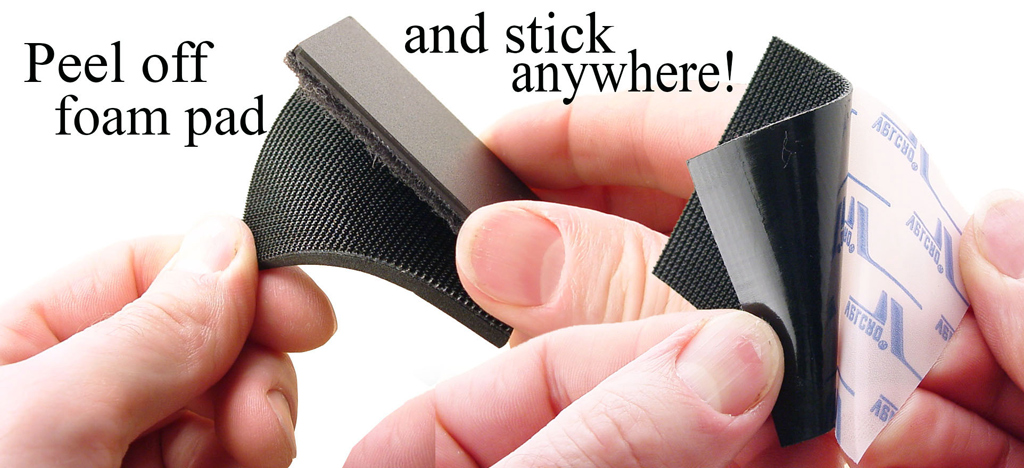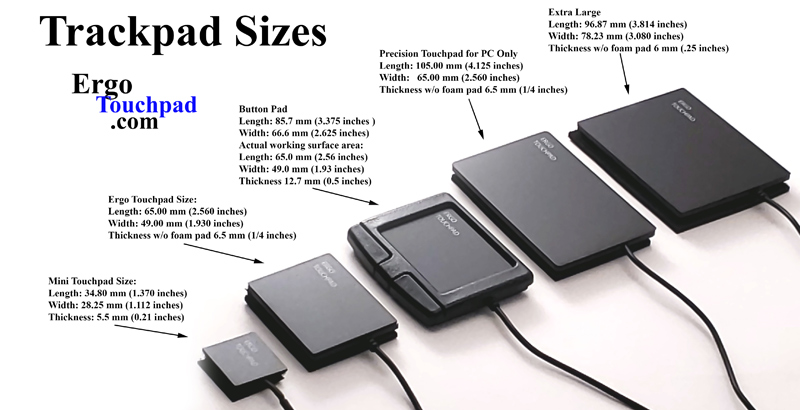In this Windows 10 guide, we'll show you how to find out if your device includes support for Precision Touchpad, and we'll outline the steps to enable, disable, and customize the experience.
- How to check if your device supports Precision Touchpad
- How to enable (or disable) Precision Touchpad
- How to customize taps with Precision Touchpad
- How to customize scroll and zoom with Precision Touchpad
- How to customize three-finger (or four-finger) gestures with Precision Touchpad
- How to customize advanced gestures with Precision Touchpad
- How to reset settings with Precision Touchpad
How to check if your device supports Precision Touchpad
Although nowadays most laptops and hybrid devices come with a Precision Touchpad, there are still devices, especially older laptops, that don't support this technology. You can quickly find out if you can use and customize multi-touch gestures with your touchpad using these steps:
- Plug in your Precision Touchpad for it to come up
- Open Settings.(by typing touchpad settings into search bar or navigate to it)
- Click on Devices.
- Click on Touchpad.
- Under "Touchpad," it should read: "Your PC has a precision touchpad.
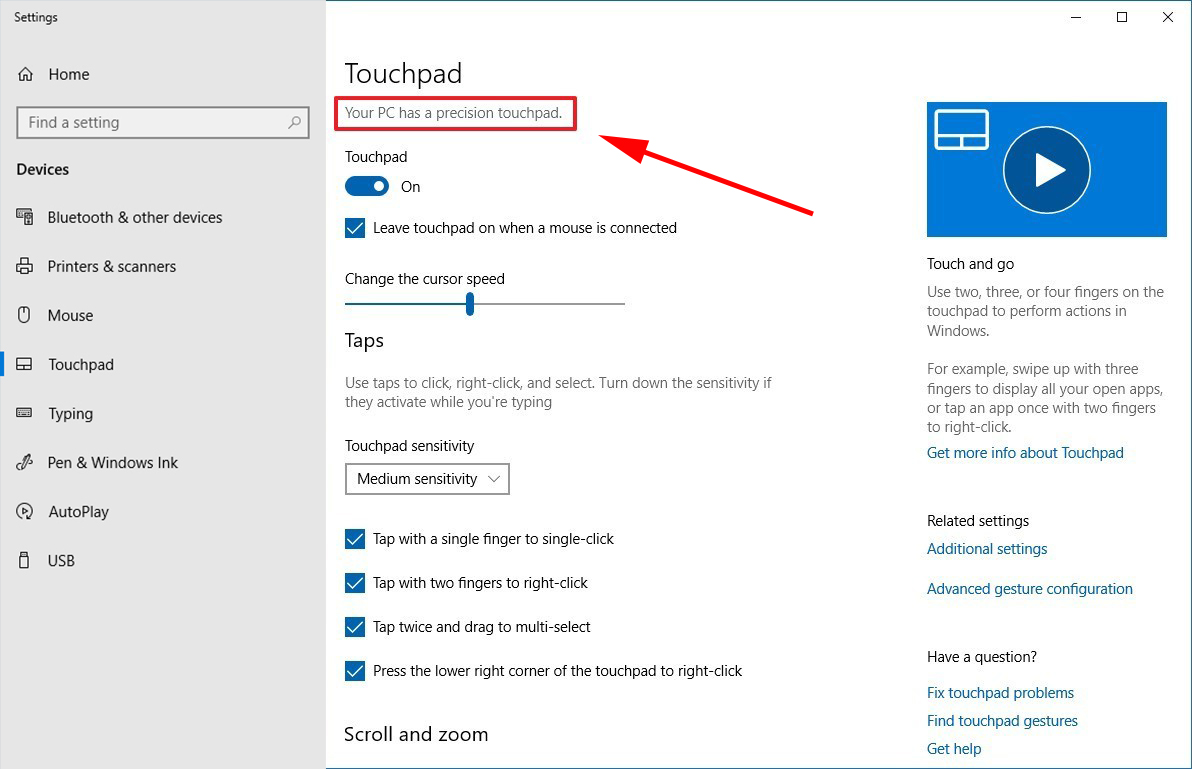
If you don't see the message, you'll still find the settings page, but you'll only get an option to adjust the touchpad sensitivity.
Alternatively, if your device doesn't include support for Precision Touchpads, you can use this workaround to replace the current trackpad driver with the Microsoft driver for laptops that use Synaptics or Elan drivers.
How to enable (or disable) Precision Touchpad
The ability to use gestures with a touchpad can be useful to improve your productivity, but it's not something for everyone and does not always works flawlessly. If you want to disable the experience, use the following steps:
- Open Settings.
- Click on Devices.
- Click on Touchpad.
-
Turn on (or off) the Touchpad toggle switch.

If you also use your device with a traditional mouse, you can choose to disable the touchpad as you connect the mouse by clearing the Leave touchpad on when a mouse is connected option. In addition, you can use the available slider to adjust the cursor speed on the screen.
How to customize taps with Precision Touchpad
The default settings are usually good enough for most users, but you can customize many aspects of Precision Touchpads. For example, using the "Taps" options, you can customize the tapping behavior when using a touchpad when clicking and selecting. Here's how:
- Open Settings.
- Click on Devices.
- Click on Touchpad.
-
Under the "Taps" section, use the Touchpad sensitivity drop-down menu to adjust the sensitivity level of the touchpad. Options available, include:
- Most sensitive.
- High sensitive.
- Medium sensitivity (default and optimal).
- Low sensitive.
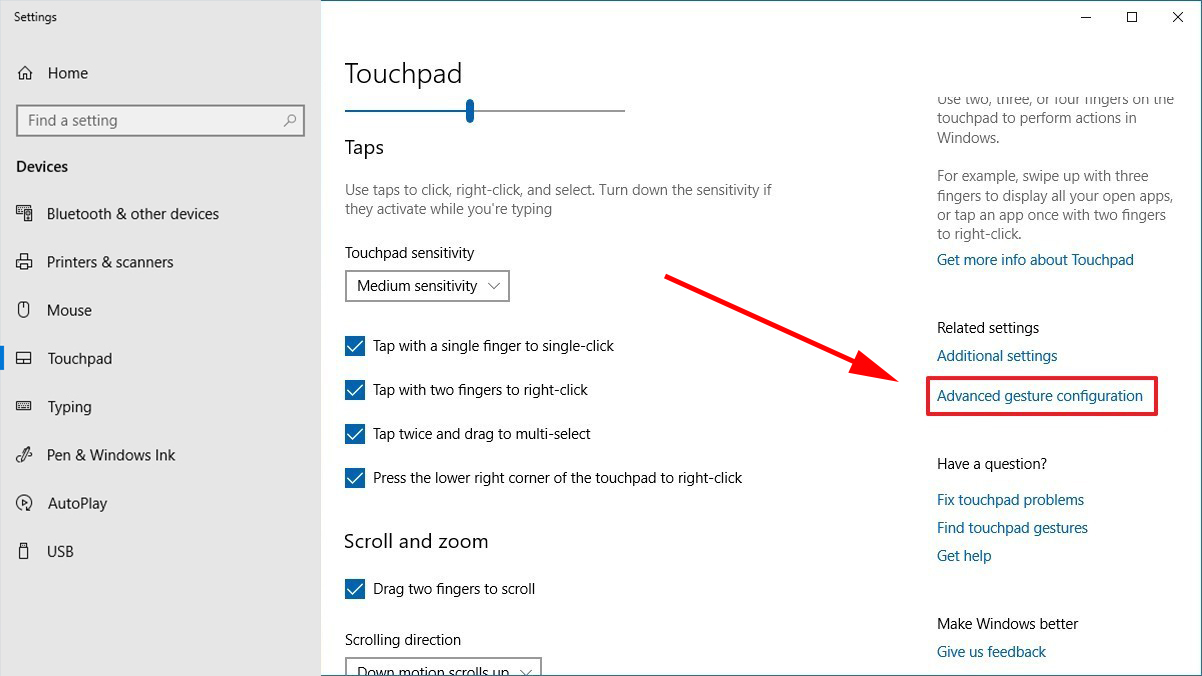
-
Select the tap gestures that you want to use on Windows 10. Options available include:
- Tap with a single finger to single-click.
- Tap with two fingers to right-click.
- Tap twice and drag to multi-select.
- Press the lower right corner of the touchpad to right-click.
How to customize scroll and zoom with Precision Touchpad
The Windows 10 Precision Touchpad settings also allow you to decide if you can use gesture to scroll content, the scrolling direction, and if you can use pinch to zoom, just like on tablets. Here's how.
- Open Settings.
- Click on Devices.
- Click on Touchpad.
- Under the "Scroll and zoom" section, decide whether or not to use drag two fingers to scroll gestures.
-
Use the "Scrolling direction" drop-down menu to change the scrolling gestures. Options available include:
- Down motion scrolls up.
- Down motion scrolls down.
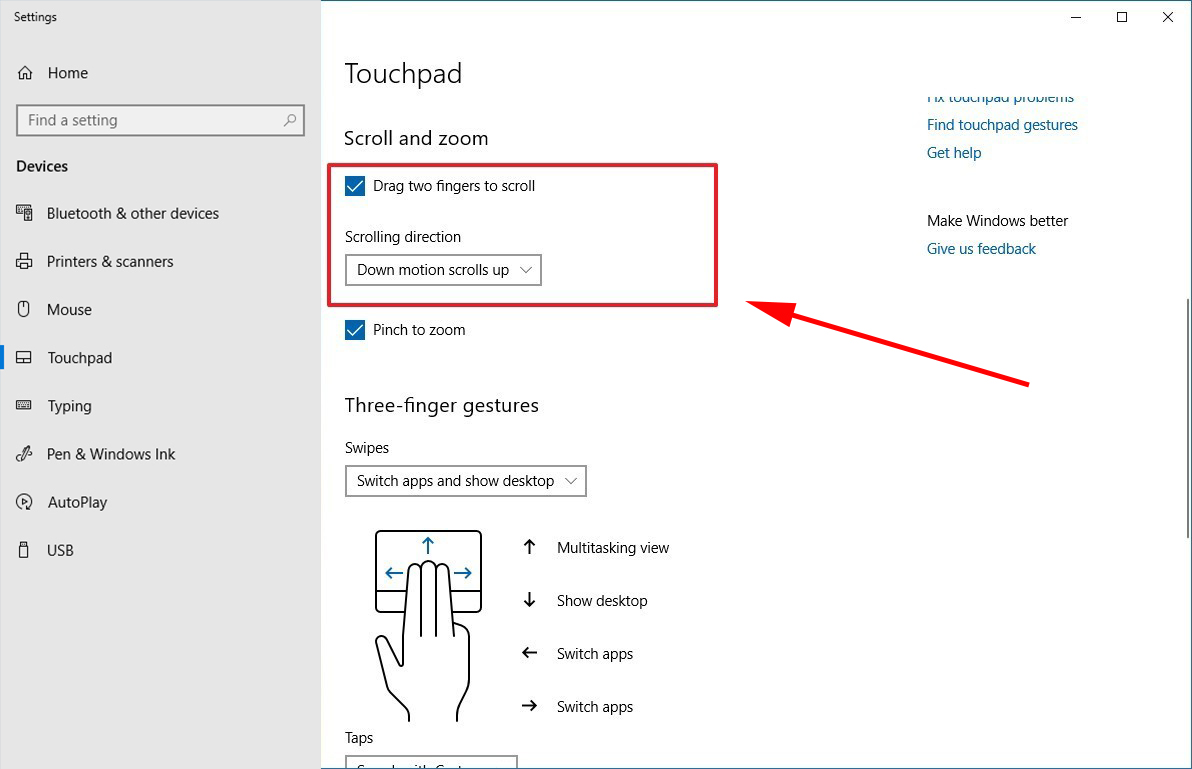
In addition, under the "Scroll and zoom" section, you can enable or disable pinch to zoom depending on your preferences.
How to customize three-finger (or four-finger) gestures with Precision Touchpad
Using the Precision Touchpad settings, you can control gestures with three or four fingers, which helps you speed up navigation when working with multiple apps, virtual desktops, and you can even use gestures to control audio and volume. Here's how:
- Open Settings.
- Click on Devices.
- Click on Touchpad.
-
Under the "Three-finger gestures" section, you can use the Swipes drop-down menu to customize gestures using three fingers. The available options are:
- Nothing: Turns off three-finger gestures on Windows 10.
- Switch apps and show desktop: Enables three-finger swipe up to open Task View, down to show the desktop, and left and right to switch between apps.
- Switch desktop and show desktop: Enables three-finger swipe up to open Task View, down to show the desktop, and swipe left and right to switch between virtual desktops.
- Change audio and volume: Allows you to swipe up to turn the system volume up, down to turn the volume down, and left and right to skip to the previous or next song using a music app.
- Custom: Turns on the custom gestures configured in the advanced settings page.
-
Use the Taps drop-down menu to customize the three-finger tapping action. Options available, include:
- Nothing.
- Share with Cortana.
- Action Center.
- Play/pause.
- Middle mouse button.
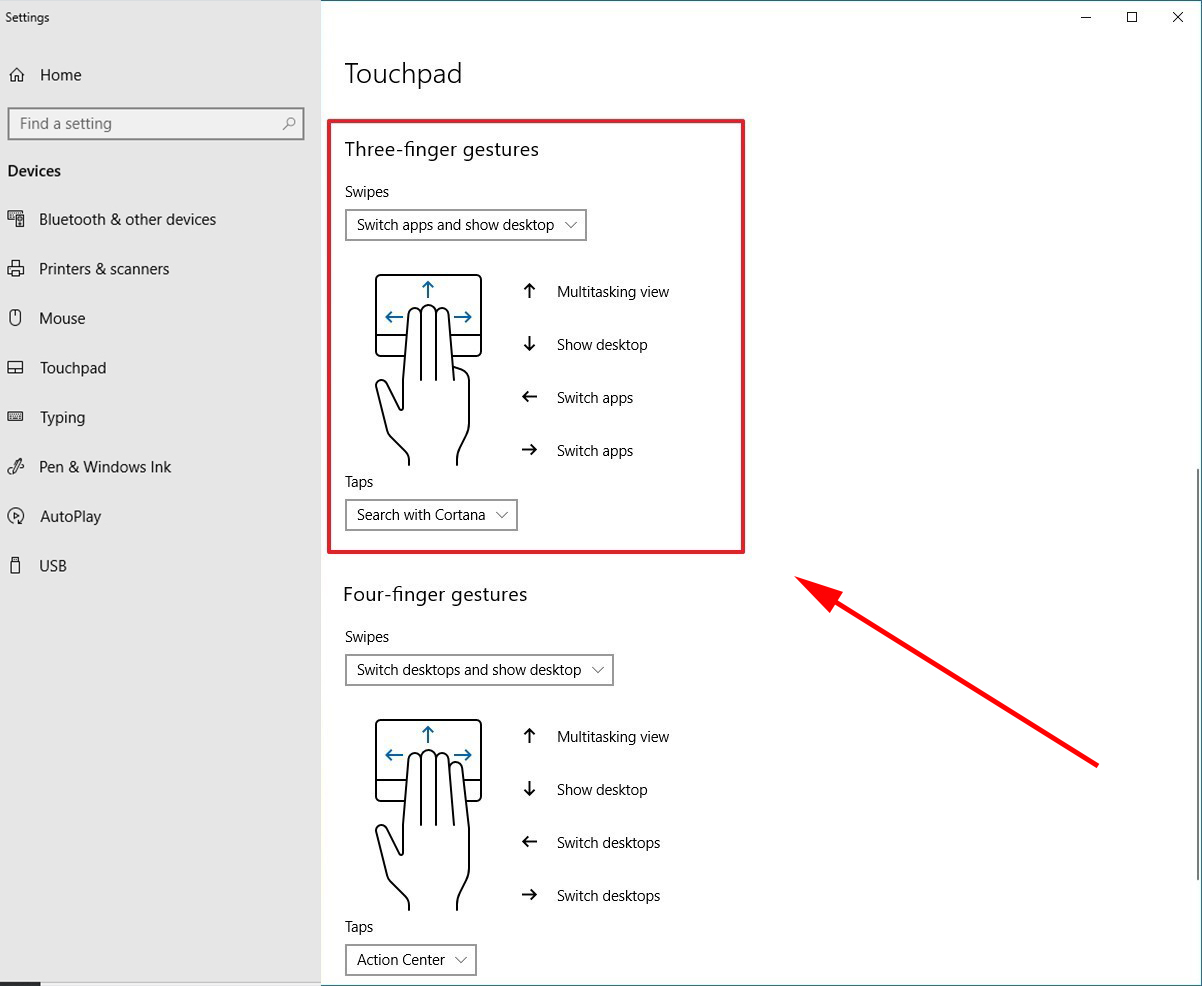
If the touchpad supports it, you'll also find a section to configure an additional gesture using four fingers.
How to customize advanced gestures with Precision Touchpad
Using the Settings app, it's also possible to customize additional advanced settings when using three-finger (or four-finger) gestures on the touchpad, and you can access and customize the settings using these steps:
- Open Settings.
- Click on Devices.
- Click on Touchpad.
-
Under "Related settings," on the right side, click the Advanced gesture configuration link.
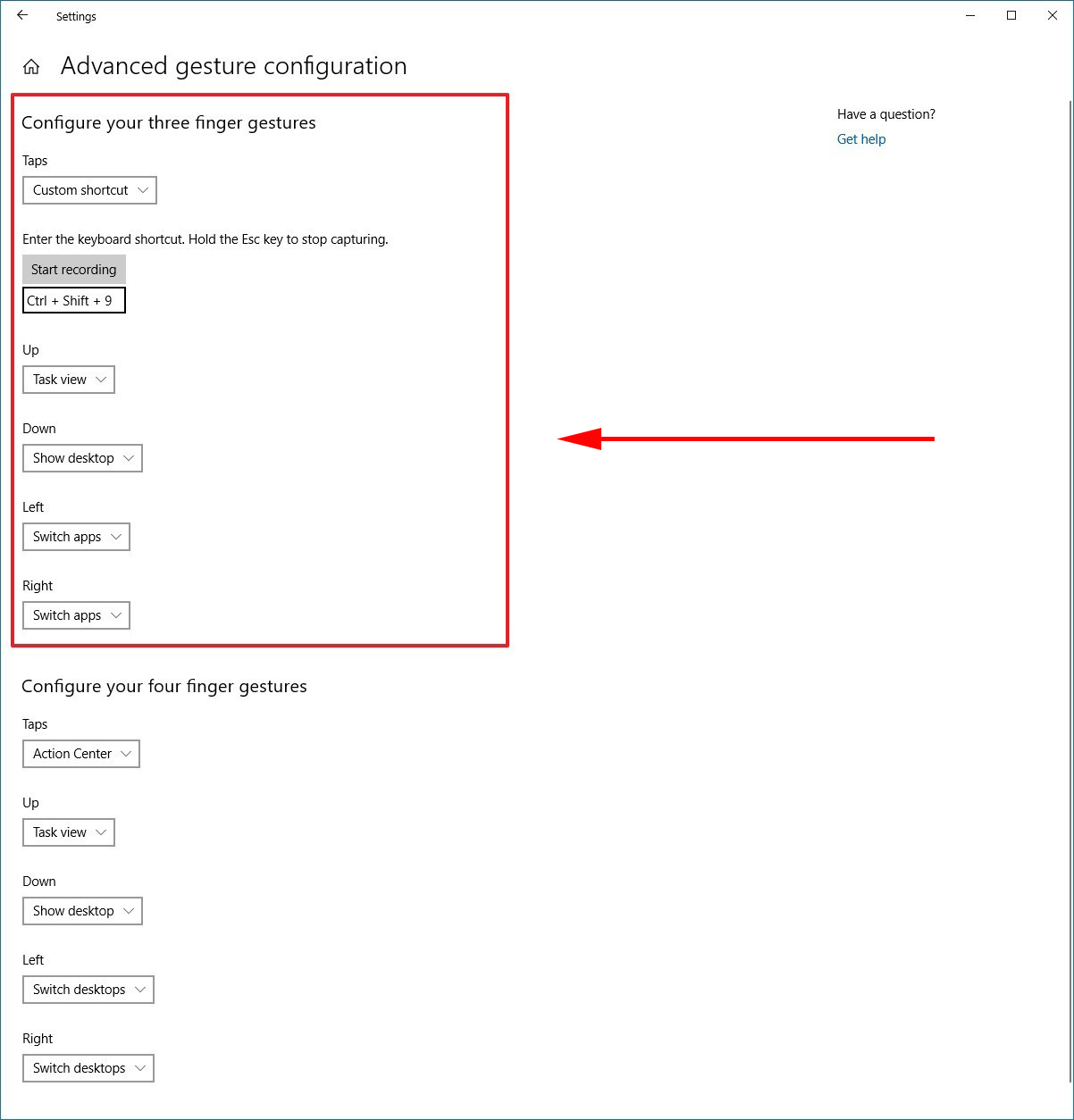
Instead of using one of the sets of actions under "Three-finger gestures" (or "Four-finger gestures"), this page allows you to specify custom actions for each swipe or tap.
For instance, you can select to use a three-finger tap or swipe on the Precision Touchpad to open Action Center. Or you can choose the Custom shortcut option to specify a keyboard shortcut that you want to execute when using a three-finger tap.
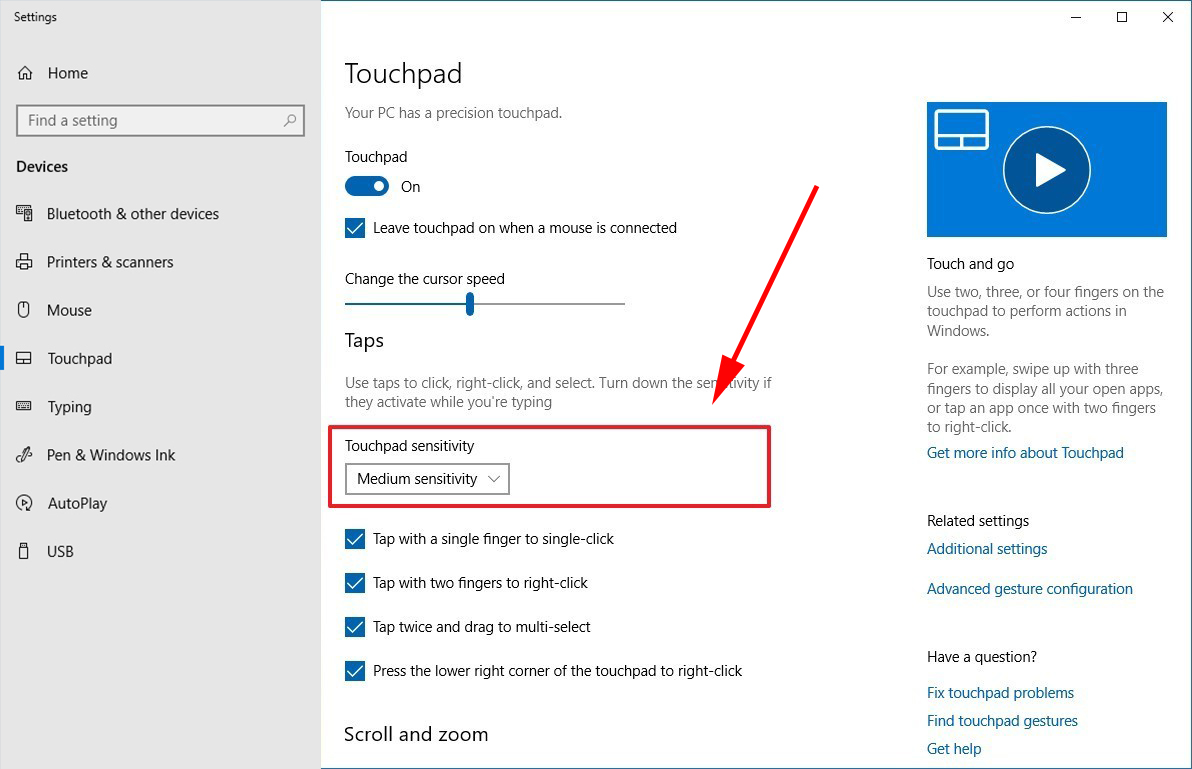
Here's a list of actions that you can use with the three-finger gesture:
- Nothing.
- Switch apps.
- Task view.
- Show desktop.
- Switch desktops.
- Hide everything other than the app in focus.
- Create desktop.
- Remove desktop.
- Forward navigation.
- Backward navigation.
- Snap window to the left.
- Snap window to the right.
- Maximize a window.
- Minimize a window.
- Next track.
- Previous track.
- Volume up.
- Mute.
- Custom shortcut.
After completing these steps, the three-finger gesture will execute the custom command you specified.
How to reset settings with Precision Touchpad
If you made changes to use the touchpad with custom configurations, you can restore the original settings using these steps:
- Open Settings.
- Click on Devices.
- Click on Touchpad.
-
Under the "Rest your touchpad" section, click the Reset button.
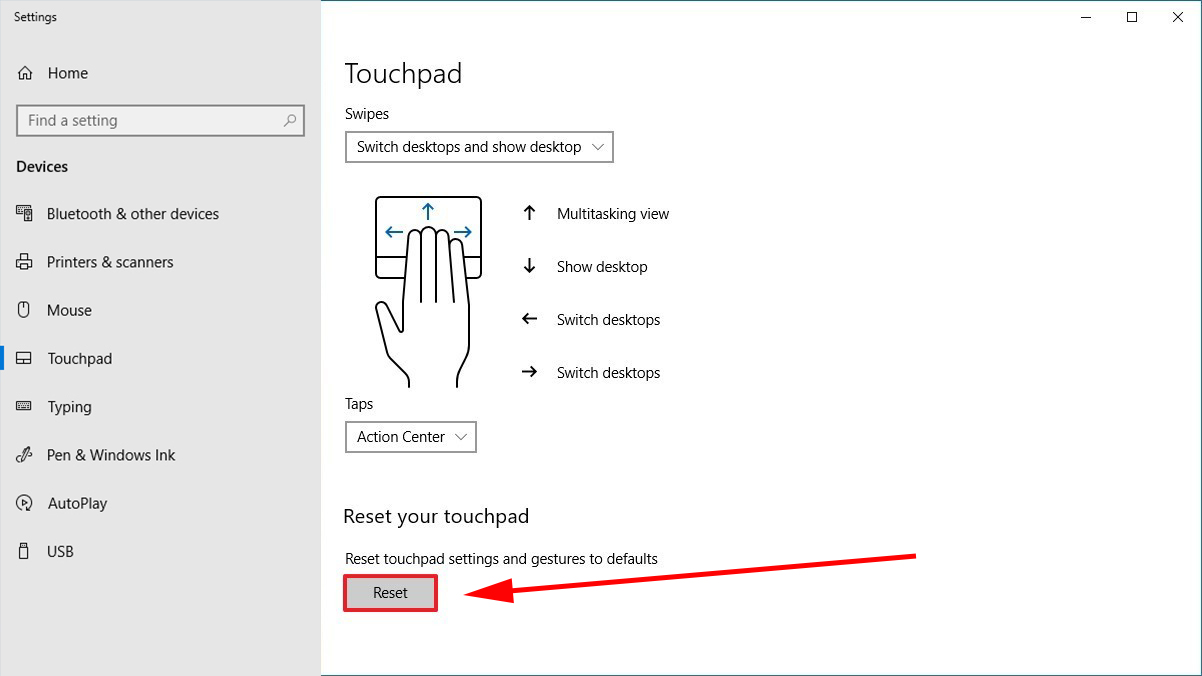
Once you complete these steps, the touchpad will revert to its default settings.


